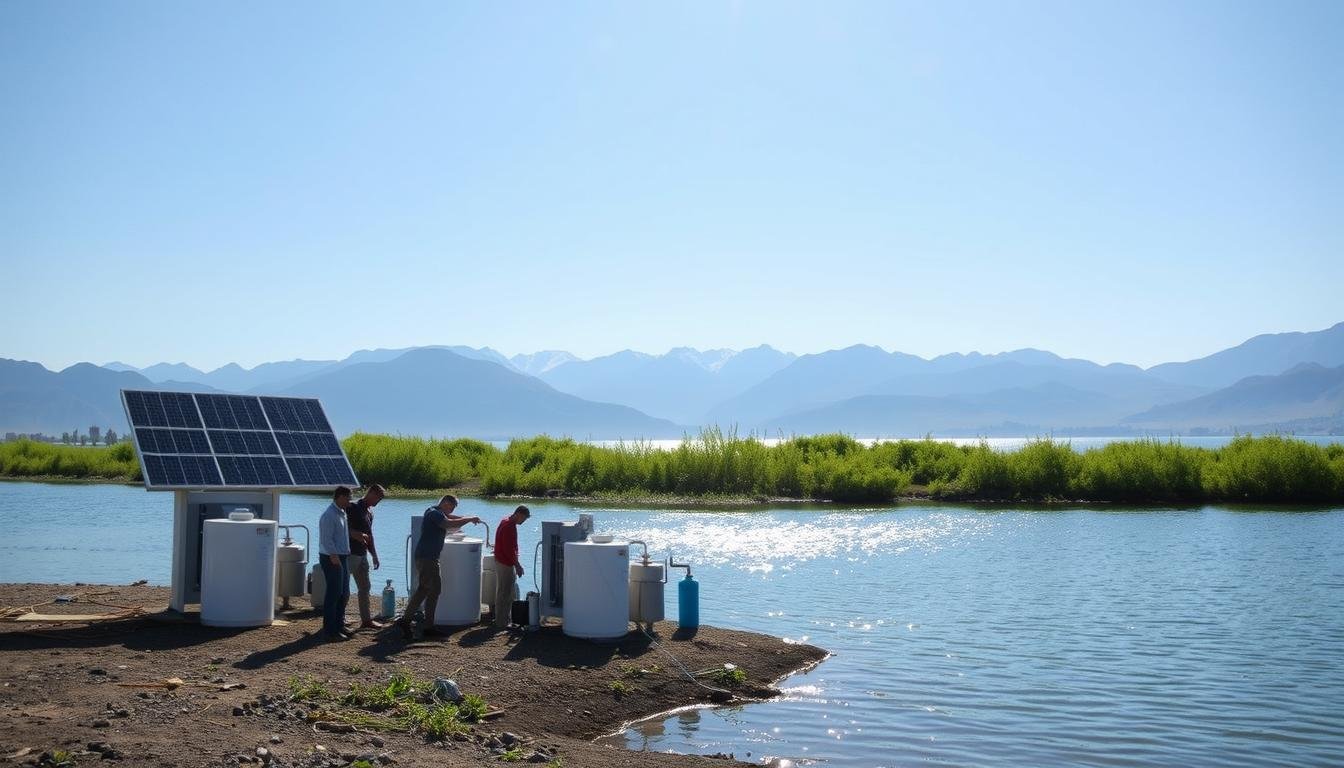Eco-tourism is becoming more popular among those who love nature. It’s a way to travel that helps the environment and supports local people. This approach lets us see amazing natural spots without harming them.
This article will explore what eco-tourism is all about. We’ll see how it helps protect our planet and supports local communities. It’s a way to travel that’s good for both the environment and the people who live there.
Understanding Eco-tourism
Definition and principles of eco-tourism
Eco-tourism is about traveling responsibly to natural places. It aims to protect the environment and help local communities. It lets travelers enjoy nature while keeping their impact small.
Imagine visiting a coastal area. Instead of a big hotel, you stay in an eco-friendly place. You go on nature walks with locals, learning about the area’s plants and animals.
Importance of eco-tourism in preserving nature
Eco-tourism helps save nature. It promotes green practices and teaches people about conservation. It supports local communities, helping them protect their lands.
It also educates visitors about nature’s importance. By choosing eco-tourism, you help keep our planet safe for the future.
Examples of successful eco-tourism destinations
Costa Rica is a top eco-tourism spot. They focus on sustainability and biodiversity. The Galapagos Islands also excel, thanks to strict rules for wildlife.
In Kenya’s Maasai Mara, eco-tourism helps both wildlife and people. These places show eco-tourism’s positive effects on nature.
Benefits of Eco-tourism for Nature Enthusiasts
Immersing in the natural environment
Eco-tourism lets you dive into nature. Hiking in forests or snorkeling in reefs is awe-inspiring. It helps you understand and love nature’s balance.
This experience makes you want to protect nature for others.
Engaging with local flora and fauna
Meeting local plants and animals is key in eco-tourism. It deepens your respect for nature and helps preserve it.
Seeing wildflowers or birdwatching teaches you about conservation. These experiences educate and inspire a love for nature.
Opportunities for wildlife observation and conservation
Seeing wildlife and helping protect it is a big part of eco-tourism. Activities like nature walks and safaris teach you about animals. They also help save biodiversity.
Supporting sustainable practices
Eco-tourism is all about supporting sustainable practices. It helps protect nature and helps local communities thrive. Eco-lodges use solar panels and collect rainwater to save energy.
They also help local artists by using their crafts. This way, eco-tourism helps keep ecosystems safe and supports local economies.
Contributing to local economies and communities
Eco-tourism helps local businesses and communities a lot. Tourists buy products and services from locals. This creates jobs and boosts the local economy.
For example, staying in local hotels and eating at local restaurants helps. Shopping at local markets also supports the community. This way, visitors help the local economy without harming the environment.
Promoting environmental education and awareness
Teaching visitors about nature is key in eco-tourism. It inspires them to make sustainable choices. Workshops and tours show the impact of human actions on nature.
These educational efforts make travelers more aware. They learn to protect the planet and make a positive difference.
Boosting personal well-being
Eco-tourism is great for personal well-being. It lets people connect with nature and feel refreshed. Activities like hiking and bird watching are good for the mind and body.
Being in nature can lower stress and improve mood. It’s a way to feel better and live healthier.
Enhancing mental and physical health through nature
Nature is powerful for mental and physical health. Being outdoors reduces stress and boosts mood. It also improves thinking skills.
Activities like bird watching connect us with nature. They make us appreciate the world around us. Nature helps us live healthier and happier lives.
Experiencing adventure and personal growth
Eco-tourism offers a chance to explore and learn. It encourages people to try new things and grow. Activities like hiking and wildlife observation are part of this.
These experiences deepen our understanding of nature. For example, hiking in rainforests shows us the importance of conservation.
Activities like camping and canoeing are also great for personal growth. They offer a break from daily life. This solitude helps us reflect and find peace.
Top Eco-tourism Destinations around the World
Costa Rica: A Model of Sustainable Tourism
Costa Rica is a leader in eco-tourism. It balances protecting nature with letting visitors see its beauty. The country has strict rules to keep its forests safe, which helps many different ecosystems.
Costa Rica also encourages using bikes and walking. This helps cut down on pollution and keeps the air clean.
It has built eco-lodges that use green energy and build in a way that doesn’t harm the environment. These steps show Costa Rica’s strong commitment to eco-tourism, inspiring others to follow.
Preservation of biodiversity in national parks
National parks are key to eco-tourism. They protect many different plants and animals.
For example, parks keep places safe for endangered animals like the California condor. They also help birds on their long travels. Without these parks, many species could disappear, harming our planet’s balance.
Engaging eco-lodges and sustainable travel options
Eco-lodges and green travel let people enjoy trips while being kind to the planet. These places use clean energy and manage waste well. They also help local communities.
Some lodges are made from materials like bamboo. Others offer lessons on nature and conservation. By choosing these options, travelers help protect our planet and learn about caring for it.
Norway: Exploring the Pristine Wilderness
Norway is perfect for those who love the wild. It’s known for its untouched beauty and strict rules to keep it that way. Visitors can see stunning fjords and wildlife in their natural homes.
Norway also has many trails for hiking. This lets people enjoy the quiet of forests and mountains. Norway’s focus on conservation and green practices is a great example for eco-tourism everywhere.
Sustainable practices in fjord tourism
Keeping fjords clean is crucial for tourism. It means not harming the environment and keeping it beautiful for everyone.
Using recycling and reducing waste helps keep fjords pristine. This way, fjord tourism can be enjoyed for years to come without harming nature.
Responsible whale-watching and Arctic adventures
Whale-watching and Arctic trips are important parts of eco-tourism. They help protect marine life and fragile Arctic areas. By watching whales safely and learning about the Arctic, travelers help protect these amazing places.
Supporting tours that teach about the environment helps too. Some tours give talks on local wildlife and teach how to behave responsibly. This way, travelers can help protect the Arctic and its creatures.
Kenya: Conservation and Cultural Experiences
Kenya is a treasure trove of conservation and cultural experiences. It’s a true embodiment of eco-tourism.
Visitors can join wildlife conservation projects. They can volunteer in national parks to help endangered species.
Travelers can also dive into local traditions. They can join community-led initiatives that support sustainable living. These experiences deepen our understanding of Kenya’s rich heritage and help conservation efforts.
Safaris and community-led wildlife conservation
Safaris and wildlife conservation go hand in hand in eco-tourism. Local communities play a key role in preserving habitats and creating jobs.
In some African countries, local communities run their own safari lodges. Visitors get to experience wildlife while supporting conservation efforts. This model is good for both the environment and local communities.
Promoting sustainable tourism in Maasai Mara
Maasai Mara needs sustainable tourism to protect its beauty and culture. Visitors can help by using eco-friendly practices like reducing waste and conserving water. Local communities also benefit from jobs and economic growth.
Supporting local artisans and wildlife conservation programs helps the environment and communities. By choosing sustainable tourism, travelers can help ensure Maasai Mara’s future.
Tips for Planning an Eco-tourism Trip
Researching eco-friendly accommodations
Choosing eco-friendly accommodations is crucial for eco-tourists. These places help reduce environmental impact and support sustainable practices. They might use energy-efficient lights, save water, and recycle.
Certifications and responsible hotel practices
Certifications and hotel practices are key in eco-tourism. Hotels with Green Globe or LEED show they care about the environment. They save energy, reduce waste, and use local resources.
Responsible hotels also engage with local communities and educate guests. This makes eco-tourism rewarding and impactful for travelers.
Finding sustainable tour operators and guides
Finding eco-friendly tour operators and guides is important. They focus on environmental responsibility and conservation. Look for those who reduce waste and use sustainable transport.
Guides who know the local ecosystem well are also essential. They educate visitors on conservation efforts. Choosing sustainable operators helps preserve habitats and promotes responsible tourism.
Minimizing environmental impact
Reducing our environmental impact is key in eco-tourism. We can protect ecosystems and wildlife by using sustainable practices. Simple steps like using reusable water bottles and bags help a lot.
Choosing eco-friendly transport, like electric vehicles, cuts down on carbon emissions. This is good for the planet.
Supporting local communities through tourism helps keep cultural heritage alive. It also boosts local economies. Teaching travelers to make eco-friendly choices is important.
Choosing eco-friendly transportation options
Choosing green transport is crucial in eco-tourism. Options like cycling or electric vehicles help the environment. Cycling, for example, reduces emissions and lets tourists enjoy nature slowly.
Respecting wildlife and natural habitats
Respecting nature is a core principle of eco-tourism. Being mindful of our impact helps protect ecosystems. Not feeding wild animals and staying on trails are good practices.
These actions protect wildlife and let visitors see nature as it truly is.
Engaging in local conservation efforts
Helping with local conservation is a big part of eco-tourism. By joining conservation efforts, tourists help protect the environment they visit.
Supporting local projects, like beach clean-ups, makes a difference. Choosing ethical wildlife sanctuaries is also important. These actions promote ecological preservation and personal responsibility.
Supporting local environmental initiatives
Supporting local environmental efforts is key in eco-tourism. Eco-tourism businesses help preserve nature and promote sustainability by participating in these efforts.
Eco-lodges often encourage guests to help with activities like tree planting. This directly benefits the local ecosystem.
Working with local conservation groups also supports research and habitat restoration. This helps protect wildlife and their habitats.
Participating in community-based projects
Getting involved in community projects is valuable in eco-tourism. It helps understand local needs and supports sustainable practices. Supporting reforestation projects, for example, restores biodiversity and creates jobs.
Wrapping up
Eco-tourism is a way to travel sustainably in natural settings. It offers unique experiences for nature lovers. By reducing environmental impact and supporting local communities, it aims to preserve nature for the future.
As more people join eco-tourism, we can all help protect our planet’s natural resources.







